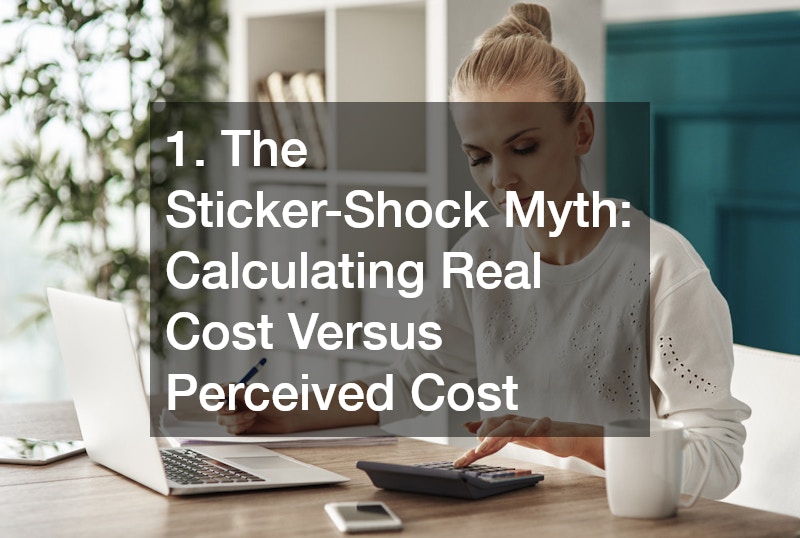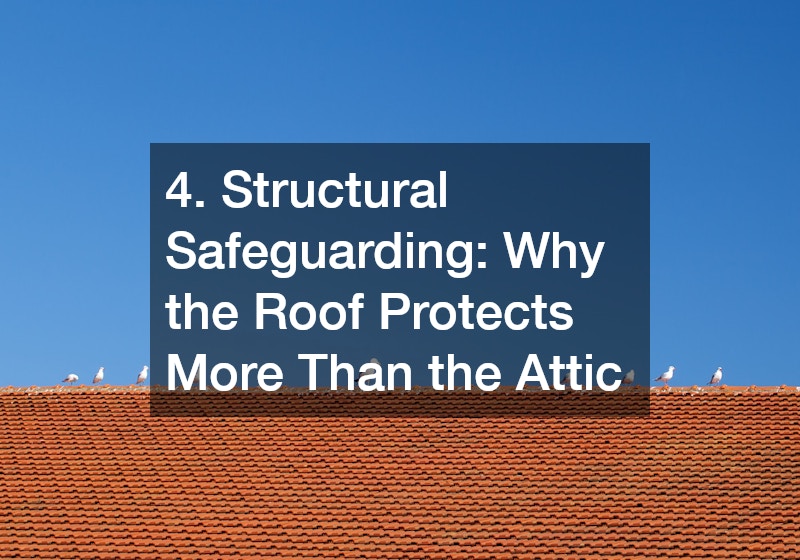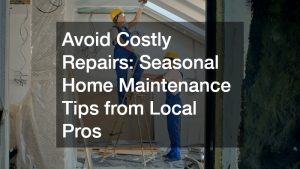The decision to invest in a replacement roof often feels like the definition of a sunk cost—money headed skyward with nothing glamorous to show for it. Yet seasoned homeowners and property managers know that paying for a new roof can be one of the most lucrative financial moves you ever make, protecting every other upgrade you install beneath it. In practical terms, a roof is the shield that guards wiring, drywall, and flooring from water, wind, and relentless ultraviolet radiation. When that shield is compromised, monthly budgets start to hemorrhage through emergency repairs, insurance claims, and escalating utility bills. Understanding how one major expense turns into decades of savings is the first step toward embracing the larger picture of whole-house efficiency.
Still, sticker shock can cloud judgment, especially for families juggling additional projects such as kitchen remodels or backyard landscaping. To clear the fog, this guide breaks down the long-run economics behind the initial outlay, weaving together perspectives from a roofing contractor, an electrician, and even a local pest control service. Each section offers two paragraphs of field-tested insight, and every paragraph packs at least five sentences of nuts-and-bolts advice you can act on right away. Follow along, and the numbers will reveal why “replace later” is often a costlier choice than “upgrade now.”
1. The Sticker-Shock Myth: Calculating Real Cost Versus Perceived Cost
Homeowners often view roof replacements strictly through the lens of the upfront check they must write, but experienced residential roofers see a web of hidden expenses that balloon when a compromise turns into a full-scale failure. Wood rot in sheathing, ruined attic insulation, and microbial growth add layers of remediation that dwarf the cost of shingles themselves. By paying for a new roof at the first signs of systemic aging—granule loss, curling edges, or soft decking—you halt that domino effect before it multiplies. A reputable roofing contractor will even provide a life-cycle cost analysis, showing how modern materials extend replacement intervals from 20 to 35 years. Those extra fifteen years translate directly into more disposable income or equity growth.
Financing options have also evolved, and many homeowners can roll a roof loan into a mortgage refi at rates far lower than a credit card or personal loan. When you compare the interest saved against the high likelihood of water intrusion with an aging roof, the math often favors immediate action. That truth only intensifies in regions where ice dams or hurricane uplift present catastrophic risk. Choosing architectural shingles or metal panels now not only locks in labor rates before inflation rises but also secures warranty terms that increase your property’s resale value. Seen through that lens, the “expensive” choice proves to be the frugal one over two decades.
2. Energy Efficiency: How New Roofs Slash Utility Bills
Heat gain in summer and heat loss in winter rise exponentially once underlayment deteriorates and attic ventilation falters. A modern reroof integrates radiant barriers, synthetic underlayment, and ridge ventilation that work as a system to cut attic temperatures by up to thirty degrees Fahrenheit. Lower attic heat means your air handler runs fewer cycles, and the ripple effect reaches every room. Localized studies show homeowners shaving ten to fifteen percent off annual utility bills simply by upgrading shingles and ventilation, even before touching insulation levels. Such immediate returns turn the phrase paying for a new roof into synonymous with funding your own rebate program.
Partnering with a trusted roofing service ensures reflective shingle granules and code-compliant intake vents marry proper airflow with weather protection. Over time, those cooler attics extend the life span of AC compressors and duct mastic, both expensive to replace. If you catalog energy savings, equipment longevity, and utility company incentives, a reroof can outperform many glossier upgrades like window swaps or solar panels. Dollars you once funneled into summer electricity can now bolster emergency funds or accelerate mortgage principal payments, making the roof a stealth wealth-building ally.
3. Emergency Repairs and Insurance Claims: Dodging the Drip Budget
Home insurance claims tied to roof leaks are among the most common—and most frustrating—filings agents handle. Once water penetrates shingles, its migration path is unpredictable: it may appear as a ceiling stain two stories below the entry point months after the initial breach. Interim patch jobs are rarely cheap; just one attic drywall panel replacement often costs hundreds in labor alone. By contrast, paying for a new roof eliminates the drip budget entirely, converting unpredictable leakage expenses into a single scheduled investment.
Insurers also reward proactive owners. Many carriers offer premium discounts after issuance certificates verify that fresh materials meet current wind and hail ratings. That annual break compounds year after year, creating an additional cash-flow buffer that offsets financing costs. Likewise, the absence of roofing-related claims keeps your loss history pristine, maintaining eligibility for the most competitive policy tiers. Avoiding the deductibles, rate hikes, and paperwork fatigue attached to water-damage claims becomes yet another dividend of timely replacement.
4. Structural Safeguarding: Why the Roof Protects More Than the Attic
Wood’s mortal enemy is moisture, and nothing invites rot faster than a tired roof. Rafters and trusses lose structural integrity when repeatedly dampened, leading to sagging ridges and bowed walls in living spaces below. Addressing those framing failures requires engineers, permits, and often temporary relocation. Spending money on paying for a new roof before this happens safeguards load-bearing elements that would cost exponentially more to repair. Some homeowners mistakenly believe they can postpone the inevitable by patching, but patchwork rarely restores design loads to original specifications.
Moreover, sagging roofs place additional stress on fascia boards, pulling gutters away from the siding and compromising drainage. Water seeping behind faulty gutters cascades into soffits, which in turn funnel moisture into wall cavities. Once insulation becomes saturated, mold spores find fertile ground, and remediation can run into five figures. A fresh roof, properly flashed and gutter-integrated, prevents that disastrous journey from the start.
5. Resale Premiums: Turning Maintenance Into Market Value
Real-estate professionals note that buyers routinely adjust offers downward when they spot curling shingles or faded flashing lines. A documented recent reroof, on the other hand, justifies top-tier listing prices because it lowers the buyer’s first-year maintenance anxiety. Industry statistics reveal that homes marketed with a roof under five years old sell nine days faster on average and command three to five percent higher closing prices. When you project that premium against out-of-pocket replacement costs, paying for a new roof often pays for itself at closing and then some.
Appraisers also factor roof age into functional obsolescence calculations. A home with vintage granite counters but an aged roof may still appraise below market comparables sporting simpler interiors yet newer coverings. Treating the roof as a financial asset rather than a cosmetic afterthought repositions your house at the top of the desirability curve. In competitive markets, that edge can be the difference between multiple offers above ask and languishing through price reductions.
6. Climate Control Synergy: Partnering Roof Upgrades With HVAC Efficiency
HVAC equipment efficiency ratings assume a home envelope that isn’t hemorrhaging temperature through the ceiling plane. An old roof lacking modern ventilation forces your HVAC company to size systems larger than might otherwise be necessary, increasing both upfront and operational costs. Conversely, the airflow channels and radiant barriers installed during reroofing reduce attic-to-living-space temperature differentials. Over time, compressors cycle less, air handlers rest longer, and refrigerant pressures stabilize, extending unit lifespan by several seasons.
Heating companies echo similar benefits: sealed roof decks and proper edge flashing prevent wind-driven snow from melting into insulation and compromising R-values. Those higher R-values let furnaces work less in bitter cold, slashing winter gas bills. A homeowner comparing the cost curve of deferred roof replacement against yearly utility expenses often discovers that paying for a new roof is tantamount to investing in a perpetual discount on heating and cooling.
7. Electrical Safety: Protecting Wiring and Devices
Few people connect weatherproof roofing with electrical safety, yet moisture infiltration is a leading catalyst for short circuits inside attic junction boxes. When condensation drips onto wire nuts or breaker panels, arcing can fry branch circuits and create fire hazards. Consulting an electrician after leak events routinely reveals scorched insulation and corrosion that demand immediate attention. Fresh underlayment and drip-edge flashing significantly lower the chances that water will reach these sensitive components.
For homeowners already juggling routine local electrical repair costs—flickering lights, GFCI trips, intermittent breaker resets—the stability of a dry attic cannot be overstated. Partnering with local electrical contractors to assess wiring integrity right after reroofing ensures the entire system performs as designed. By prioritizing a new roof in tandem with any panel upgrade, you secure the high ground in electrical safety and reliability without multiplying service calls later.
8. Pest and Insect Defense: Blocking Silent Invaders
Insects and rodents scout for warm gaps along fascia and ridge edges where aged shingles or torn flashing create easy portals. Once inside, they chew wiring, nest in insulation, and produce waste that accelerates wood decay. Engaging a pest control service yields immediate relief, but lasting defense hinges on closing entry points permanently. That goal aligns perfectly with paying for a new roof, because each layer—from starter course to ridge cap—is installed to modern pest-resistant standards.
Moist roof sheathing also attracts termites, making a dry deck crucial before any local termite inspection. Removing old felt saturated with decades of moisture denies the pests the softwood buffet they seek. Many termite bonds require proof of moisture control as a condition of warranty renewal, and nothing satisfies that clause better than brand-new decking sealed with water-blocking underlayment.
9. Warranty and Maintenance Packages: Hidden Lifetime Savings
Modern roofing materials come with factory warranties ranging from thirty years to lifetime coverage, contingent on professional installation and periodic inspection. By choosing a certified crew for roofing service, you lock in protection that stretches far beyond what older roofs could claim. That warranty backbone acts like an insurance policy against manufacturing defects, wind uplift, and premature granule loss. Over decades, you’ll spend less on patch materials and emergency sealants because eligible repairs revert to warranty claims instead of cash withdrawals.
Many top-tier manufacturers also require annual maintenance visits to keep warranties intact—a benefit disguised as a chore. Those checkpoints help identify minor sealant lapses or vent screen blockages long before they morph into leaks. When your file contains documented upkeep, future buyers see a gold-standard maintenance record that bolsters listing price. Suddenly, the concept of paying for a new roof morphs into funding a transferable guarantee that travels with the deed.
10. Financing Versus “Pay-as-You-Leak”: The Interest Rate Reality
Homeowners who dismiss replacement costs often adopt a “pay-as-you-leak” philosophy, patching shingles after each storm. That reactive spending rarely gets tallied in one place, making it difficult to visualize the true cumulative burden. If you total three or four emergency calls a year—each visit including travel fees, material markups, and interior drywall repairs—you may already be spending as much as an installment plan for full replacement. Because roofing loans often carry lower rates than emergency credit-card use, paying for a new roof can be cheaper per month than the ad-hoc strategy it replaces.
Interest rates matter here, and competitive lenders frequently extend promotional APRs for energy-saving home improvements. Folding roof work into a refinance, for example, spreads payments over thirty years while delivering immediate monthly utility savings. Even homeowners who plan to sell within five years can benefit, as higher resale values and faster market times recoup principal faster than forecast models anticipate. When numbers are scrutinized side by side, proactive financing almost always wins.
11. Local Labor Economics: Why Timing Affects Total Cost
Roofing material prices track global petroleum and steel markets, so waiting for “later” can expose you to surging costs unrelated to your home’s immediate needs. Labor availability follows similar cycles; after regional hailstorms or hurricanes, contractors’ schedules book out months, and overtime rates skyrocket. Scheduling your project in lull seasons—early spring or late autumn—often nets discounts and faster turnaround times. If those seasons coincide with a window of favorable interest rates, the total savings can be dramatic, underscoring the wisdom of paying for a new roof sooner rather than later.
Local regulations add a second timing element. Municipal building codes update to stricter wind-load or underlayment requirements every few years, and grandfathering is only valid until you perform major repairs. Replacing now locks you into the current code without triggering expensive retrofits mandated by future updates. Proactive timing thus protects both wallet and compliance status.
12. Long-Term Comfort and Peace of Mind: The Intangible Dividend
Numbers tell one compelling story, but quality of life writes another equally persuasive chapter. A home free from ceiling stains and musty attic smells lifts daily mood and reduces background stress, benefits research increasingly links to better health outcomes. Knowing your roof will ride out the next thunderstorm without the ritual pot-and-pan placement in hallways is liberating. Neighbors juggling leak buckets and insurance adjusters often express post-repair envy of families who elected early replacement.
Finally, the ripple effects extend beyond the property line. Protecting wiring from water, guarding insulation R-values, and preventing pest colonization contribute to neighborhood safety and real-estate desirability. When one home displays meticulous care, others often follow, and block-wide property values rise in unison. Thus, paying for a new roof resonates as both a personal and communal investment, yielding dividends in pride, comfort, and collective prosperity.
From slashing utility outlays and forestalling structural decay to trimming insurance premiums and elevating resale value, the financial logic in favor of paying for a new roof is overwhelming. Factor in ancillary savings on local electrical repair, emergency HVAC calls, and pest-control treatments, and the equation tilts even further toward decisive action. By coordinating with skilled trade allies—whether local electrical contractors testing attic junction boxes or residential roofers installing modern ventilation—your roof becomes the cornerstone that lets every other system reach peak efficiency. Delay invites leaks, rot, and unpredictable bills; acting now sets you on a trajectory of stable costs and growing equity. When viewed through that long-range lens, the choice is clear: replace today, and enjoy compounding savings for decades to come.















